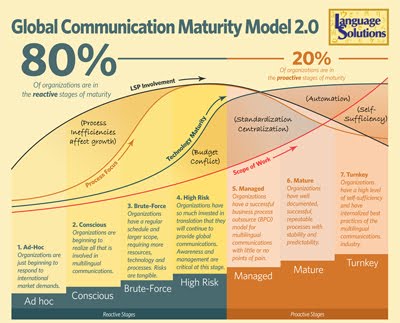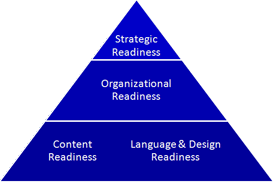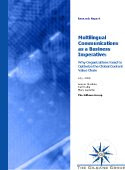We seek to shape perspectives that your multilingual communications is a valuable element of your brand assets, not a commodity. With translating an organization's marketing publications, we consider brand equity. How is the brand affected by translation? Does the organization’s brand risk dilution at any point in the process? Do you maintain a consistent brand while respecting cultural nuances? Is there a strategy for global brand consistency?
To answer these questions, we look at the critical processes around the creation of an organization's source publications and translations. It's important to be able to identify gaps in the processes that can be improved and prioritize objectives throughout the whole Content Lifecycle. Management of these critical process steps can bring internal process efficiencies affecting the multilingual communication strategy while also protecting the brand identity.
Click on image to enlarge
How do your marketing publications drive results? To build a business case for your multilingual communication strategy, it is necessary for your Language Service Provider to understand your organization's business objectives (Tweet this!) and to demonstrate that effective communications can move your organization toward achieving those objectives. How do these goals relate to the processes that are in place to create the communications for the domestic market? What processes need to be in place for multilingual communications to match that success? Can you also determine the messaging that has a direct impact on the brand identity?
We have defined 6 objectives for clients in the area of Strategic Readiness. Consider the objective to "Establish control and ownership of your messaging to protect an organization's brand reputation and identity." (Tweet this!) In order to achieve this objective, an organization can take on a number of action items. We start clients on an inventory path of current messaging in their international markets. We then determine which messaging has a direct impact on their brand identity and determine the languages in which those brand materials are published as well as the level of content required for baseline translation.
From here, an organization can determine their processes to eliminate or revise messaging that has not been approved by their corporate office or that which may be a risk to their brand reputation or identity. Drill down further to technology assessments and determine the role of technology in the channels for communication and how terminology will be managed to centralize control of that messaging.
Which indicators help you to measure control and ownership of messaging? We have 8 metrics to determine this and among these, we quantify the number of documented communication strategies for each target market, the number of markets in which messaging originates with corporate, the percentage of content reuse in translation, the number of languages with terminology centralized as well as the client's change of perception in commitment to a global strategy. Within the Balanced Scorecard framework, this objective is within Product and Service Quality. Stay tuned for tomorrow's post and we'll write on an actual case study of a client that implemented this successfully and the impact it is having on their brand!










